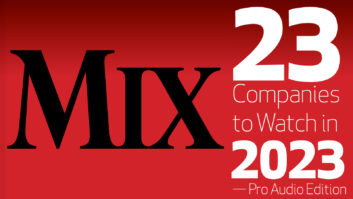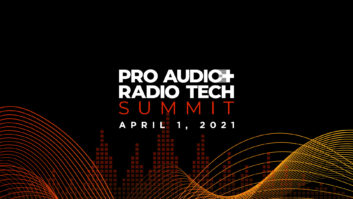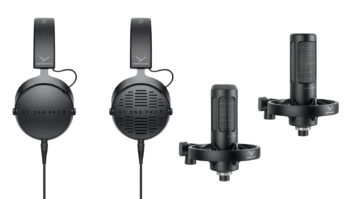Craig Anderton

Although concerns about Apple’s commitment to pro-level creators are likely overblown—Apple probably has a few tricks up its sleeve for 2018—Microsoft is doing a carpe diem and targeting the creative market. In fact, its third major update to Windows 10 is called the Creators update. But does “creators” include pro audio?
Incorporating USB Audio Class 2 (UAC2) is a significant improvement, especially because Microsoft was incredibly late to the party (note that UAC2 is not the same thing as USB 2 or USB 3, which relate to connection speed). With Mac, Android and Linux, dealing with high-res audio (e.g., 24-bit/192 kHz) simply involved connecting your audio interface. Prior to the Creators update, Windows supported USB Audio Class 1, which topped out at 24-bit/96 kHz. For high-res audio, you needed a custom driver—and the faith that it would work with the current flavor of Windows as well as your chosen sample rate and hardware. With UAC2, high-res audio is plug-and-play for up to eight channels of 32-bit/384 kHz audio, and manufacturers no longer need to write—or maintain—custom hires drivers. (More than eight channels will need to be accommodated through exclusive mode, but at least for now, there’s limited demand for support beyond eight channels.)
The Creators version also offers Game Mode, which dedicates more GPU cycles and a set number of CPU threads to a game, while preventing interference from background processes. While this sounds potentially beneficial for DAWs, the developers at Cakewalk tested it out with Sonar’s multiprocessing engine and according to CTO Noel Borthwick, “While playing back high-load projects with many tracks and higher plug-in counts, enabling Game Mode resulted in higher CPU usage as well unbalanced multi-core CPU load. Functionally, this could cause more frequent glitches or dropouts in audio playback, due to less-optimal CPU load balancing.”
Other tests revealed similar results, possibly because Game Mode allocates a fixed amount of resources while a DAW like Sonar wants to use all CPU cores. It seems the only potential benefit for audio would be with under-powered systems running lots of background processes that interact negatively with other apps or services. Fortunately Windows defaults to Game Mode off, but I’ll be monitoring later iterations to see if it incorporates changes that would benefit pro audio. (Maybe someday there will be a Pro Audio Mode…I can dream, can’t I?)
So we have one “it’s about time” and one “no thanks,” but what may be truly significant for pro audio involves two features clearly intended more for graphics and video—the Pen and Surface Dial input devices, which worked with the Anniversary update but are now starting to get traction due to the Creators update’s emphasis on the Pen. Although the Dial ($99) was introduced with the Surface Studio computer, it’s also compatible with the Surface Pro 4 and Surface Book. In conjunction with the Pen (Microsoft envisions the two working together), the duo may play a significant part in the controller of the future.
You can place the Dial on the Surface Studio’s screen and for all supported computers, on your desktop (the Dial connects via Bluetooth). The Dial then works with radial menus where you rotate, click or click-and-hold, while the pen can create data that responds to pressure—which has all kinds of potential applications, especially because you can also program the dial with keyboard shortcuts, as well as initiate functions by clicking on the top. With MIDI data, pressure could be translated into velocity, aftertouch or controllers, as selected by the Dial. Another option would be to have the Dial choose a clip-editing function like Split or Stretch, and pressing with the pen would enable that action—while not pressing would perform the usual slip-editing functionality. This might also allow for far more natural entry with notation views, and the Dial’s haptic feedback could let you feel more involved with a program—imagine controlling a fader, and feeling when it goes into the red instead of simply seeing it.
The Dial and Pen work with existing apps, but don’t reach their full potential unless apps (like Sketchable) are optimized for using them. However, it does seem like these input devices will find favor with creators, and once they reach critical mass, I think we’ll be seeing Windows music programs that take advantage of a more natural way to interact with software.
Visit author/musician Craig Anderton’s official web site at craiganderton.com, and stream his latest video album, Neo-, at youtube.com/thecraiganderton.






